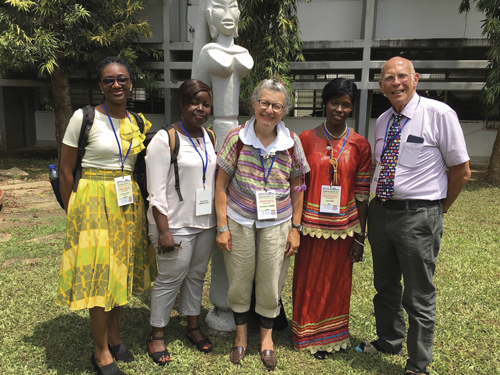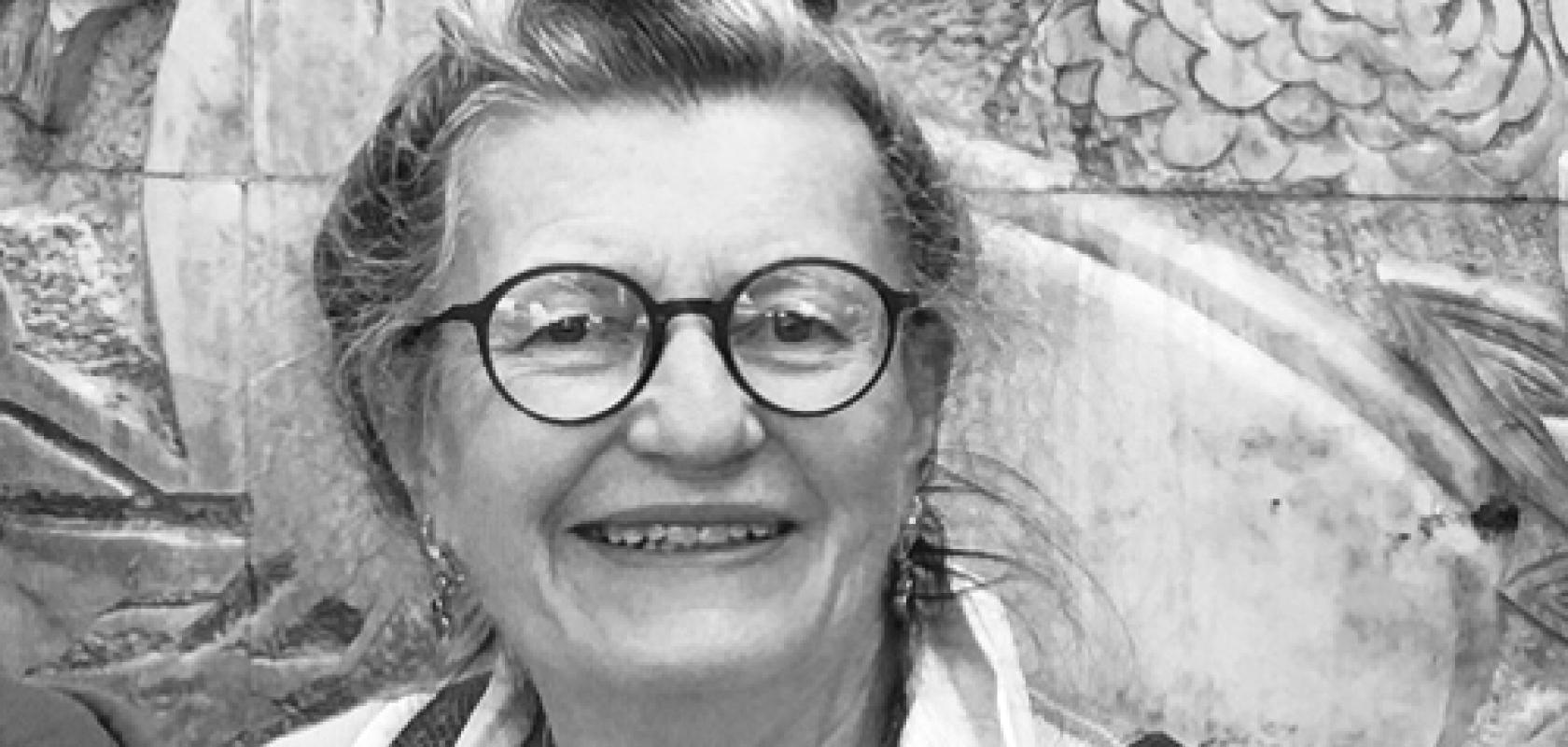![]()
Katarina Svanberg, professor at Sweden’s Lund University and South China Normal University, discusses her career developing optical cancer treatments, and notes why it’s important to support early-career researchers
What are some of the various applications of lasers in oncology?
The application of lasers in oncology includes the thermal action of lasers as the ‘bloodless knife’ in surgery, in which CO2 lasers interact with the water content in the tissue and are used for precision cutting.
The non-thermal spectroscopic use of lasers, known as photodynamic therapy or PDT, relies on the interaction between laser light and photo-active agents. In this application, photo-inducing drugs are activated by light, usually in the red wavelength region, for optimal light penetration. Because the retention of the drugs is concentrated in malignant tissue, the tumour-killing action is also selective. Still, the light penetration into tissue in this case is restricted to less than one centimetre.
The obstacles to fully integrate the field of biomedical photonics and its potentials into active clinical use are related to the availability of scientifically interested medical doctors, and even more to the work burden on clinicians
To overcome this limited penetration, the laser light can be delivered via optical fibres inserted into the tumour. This modality, interstitial PDT (IPDT), is very efficient if it is combined with refined dosimetry, based on the tissue optical properties. One interesting type of malignancy for IPDT is recurrent prostate cancer after ionising radiation therapy, externally or with branchy therapy, in which surgery is usually not an option. For this quite large patient group, IPDT with refined dosimetry seems to be an attractive option, with minimal unwanted side-effects. Technology from our lab at Lund University and Lund University Medical Laser Center is currently in International Phase I and II trials in Canada and England and will soon start in the US through the research spin-off SpectraCure AB.
Laser spectroscopy techniques such as laser-induced fluorescence (LIF) can also be used in diagnostics. Of particular interest are thin, non-visible tumours, which might be overseen in common endoscopy. LIF is excited by UV or blue light, and is a highly efficient way of visualising thin, in-situ, non-invasive cancers in organs such as the cervix, bladder, lungs, or intestine. The tissue characterisation can rely on selecting only the endogenous chromophores in the tissue – such as the NADH, flavins or collagen – by monitoring their autofluorescence. An enhanced tumor demarcation is achieved by adding tumor-seeking agents, using the same drugs as for PDT.
What challenges in oncology could be addressed by lasers or photonics?
Generally speaking, the obstacles to fully integrate the field of biomedical photonics and its potentials into active clinical use are related to the availability of scientifically interested medical doctors, and even more to the work burden on clinicians. Another roadblock is the availability of venture capital to make sure that clinical trials can be initiated, based on the promising results presented in scientific journals, to the benefit of our patients. As clinical medicine is evidence-based, all new techniques have to be judged and compared via clinical trials, preferably through very costly randomised trials.
Are there particular types of cancer that laser or light-based technologies are best positioned to solve or address?
Recurrent prostate cancer is a very interesting niche for PDT. The traditional therapies for localised primary prostate cancer are surgery or radiation therapy. However, the problem is that about 15 to 25 per cent of prostate tumours recur, and, for these patients, there are no other real ‘good’ therapy options. Hyperthermia and cryosurgery can be applied, but these techniques are not truly specific to the tumour tissue. The administration of anti-testosterone hormones has turned out much more negatively than expected. As PDT is tumour-selective, it has a great potential to be a first-choice therapy for these patients. With a very precise dosimetry for delivering the laser light only to the affected tumour volume, avoiding organs at risk and, at the same time, monitoring the photo-activating agent and the oxygen content, a true individualised therapy can be delivered.
Related story: Optical techniques promise better cancer recognition
Non-pigmented malignant skin tumours are also very suitable for PDT. The rate of cure is comparable to conventional techniques, with a much shorter healing time and very good cosmetic outcome. This is a very important finding, shown in a randomised clinical trial, which was the basis for introducing the technique as a standard treatment modality at the Lund University Hospital. This modality is used at many other hospitals.
You’ve done much to support the next generation of researchers, particularly in lower resource areas. What makes this work so important to you?
The most strategic way you can devote your time is by collaborating with scientists from lower-resource areas. For my husband, Professor Sune Svanberg, and me, it has meant helping to build a biomedical optics network in sub-Saharan Africa, an area with a very heavy disease burden and proportionally fewer medical schools, doctors and other skilled medical personnel. I am proud that SPIE recognises the need to support young scientists across the globe. Organisations such as the Abdus Salam International Centre for Theoretical Physics (ICTP) make it possible for scientists from the developing world to come together, sharing knowledge and experience. Its annual Winter College on Optics – supported by SPIE, the Optical Society of America, and the European Optical Society among others – is an inspiring event for young scientists who build up a life-long network with peers around the globe. Such initiatives should be duplicated to reach, encourage, and support the young research generation.

Svanberg, centre, at the African Spectral Imaging Network (AFSIN) Conference in Cape Coast, Ghana, July 2019, with (left to right) Yebouet Marie Florence, Doumun Solange, Mama Sangare, and Sune Svanberg
As a community, how can we better support early-career women in optics?
As a mentor, it is important to encourage self-confidence in girls and young women scientists: self-confidence is so much less pronounced if you are a girl as opposed to a boy. I was lucky – my family had no experience of higher education, no academic relatives at all, but my mother and father understood the importance of education and made it possible for me, even from a poor family, to enter university. My research career started late: it was only after 10 years of teaching high school that I entered medical studies. Maybe, initially, I was a girl who thought that the highest level I could aim at was to be a teacher, which of course is a very important job – perhaps the most important of all. But I dreamed of becoming a medical doctor and persuaded myself to start all over again. After that came my research; how it ended up in biomedical optics is mainly due to the opportunities available to us through the interdisciplinary platform my husband and I formed. We need to encourage confidence and perseverance, as well as creating opportunities.
-
16 May marks UNESCO’s International Day of Light as well as the 60th anniversary of the laser.


